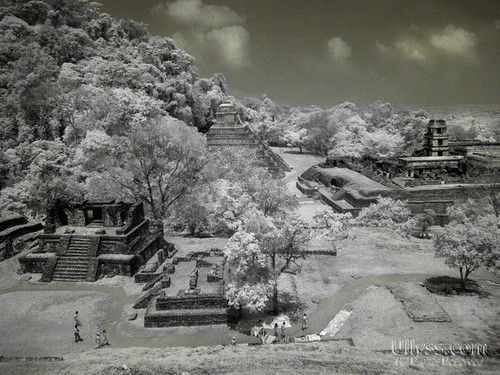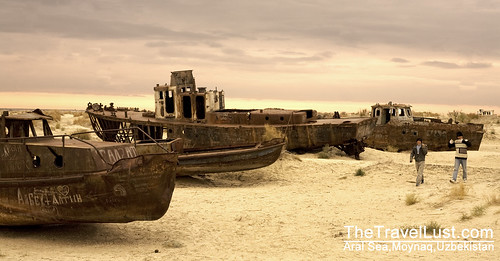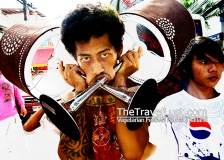Here in Nosy Mangabe, Nocturnal walks are best done with the occasional bouts of heavy rain pouring onto you while you try your best to look up into the tree canopies. The whole forest comes alive in pitch darkness. With reflected eyes of moths flying across your face as you shine your head lamp on the designated walk way, a pair jumping eyes of tiny mouse lemurs across trees tops , then stopping to stares at you as you walk away in creepy silence. A beautiful boa python lying in the middle of your path ready to strike, while it awaits for its prey, sleeping chameleons hanging right at the tip of tree branches for you to photograph its half open eyes with a terrified expression on its face.
Info:
The Aye Aye is a strange creature, its a lemur and part of the primate family. It has a scrawny haired body, looks more like a rodent, with long bushy tail, with bat like ears, with a face of a weasel, rodent teeth, thin hands and a long skeleton middle finger which it uses to tap like a woodpecker for insects and nuts. This endangered lemur is a protected animal and in 1960s, a few captured Aye Ayes were released in Nosy Mangabe, a small island reserve 20minutes across Antongil Bay, Moaransetra, Eastern Madagascar. An island I got to know from Douglas Adam’s book, “Last Chance to see” which was part of my inspiration for visiting Madagascar. Getting a chance to see this elusive animal was part of my bucket list, I am determined to fulfill my list.
My travel companion who thinks I’m already weird now decides that I am completely mad to find the Aye Aye to be such a cute and cuddly animal instead of the decidingly hideous appearance of a scrawny rat like monkey creature. A few other locals that I met, also found me strange to be completely obsessed in finding this rather elusive and solidary creature.
As soon as I landed in Moaransetra, a sleepy little town which grows vanilla, cloves, bananas and other fruits, I found myself becoming a regular patron to a friendly provision shop. With lots of broken french and barely there english, we communicated and had the owner of the shop calling up folks he knew to find a guide and boat hire. With only a few limited boats in town, boat hire to Nosy Mangabe is pricey, a day trip out to a national park can add up to almost 100 euros a day.
Getting to Nosy Mangabe
Arranging to Nosy Mangabe can be quite an adventure, if you are on the cheap and on the budget like me, it is no easy feat.
The return trip to Nosy Mangabe cost 100,000 aviary with additional 30,000 aviary for overnight stay and compulsory guide hire for the total stay cost 10,000- 25,000 (day walk 4hours) + 10,000 (nocturnal walk 2 hours). Tent hire cost 5000 aviary for the tent and a further 5000 aviary for the camp site.
My travel companion and me agreed that this guide named Serge was definately crappy while making arrangements at our regular provision shop. In the national park office, there were gradings of guides and they charge accordingly to their guiding skills and language level, Serge mentioned he was of the lower grading where you pay 15,000 aviary, 20,000 for medium grade and 30,000 for the highest grade. He mentioned he has worked as a guide for 8 years but only has a lower grade, still he was asking 25,000 aviary for his services instead of 10,000 aviary he was suppose to be charging. We didn’t mind much about paying him 15,000 aviary more as we didn’t really want to find another person given our limited time in Moaroansetra.
The first guide we found at the Moarasetra national park office was quite awful, a medium graded guide whom we barely understood and had trouble communicating, he was said to have proficient english. We wanted a high level guide which cost 30,000 aviary, the rather helpful officer couldn’t find the guides available for us. Having a good guide who can spot and explain the flora and fauna really help to enhance your whole nature experience.
Another guide, Rakoto at Le Coco Beach Resort, whom the lonely planet had recommended wanted 250,000 aviary a day for arranging a guide and other logistics to Nosy Mangabe and 700,000 aviary a day to Masaola Penisula nature reserve. As with all lonely planet guidebook recommendations, fame seem to have gotten the best of him. I won’t recommend Rakoto as your tour organiser as he does seem quite a smart ass take it or leave it attitude even with his unassuming appearance.
Serge was only a tad better as he could somehow communicate in understandable english. With 8 years of being a guide and only receive a low grade, you would think we should another guide. and no, lazy us decided we just keep him.
Our crappy guide constantly needs to be prompted for answers as he wasn’t readily able to speak or offer any other information. You ask him a question, he replies with a short sentence and that’s all you going to get, unless you prompt him for more. It got quite tiring asking him anything further about the other parks arrangements.
Serge demanded a further 12,000 aviary for his meals which consist of zebu meat (local beef) with rice and other imported expensive highland vegetables along with an extra tent for him (he never did use that extra tent btw) I had to further purchase a cooking pot and cooking charcoal fuel for him that was on top of the other food supply I had
to purchase for all of us. Of course I utterly refused his demands and told him that was out of the question. Why should I pay for all his equipment and buy him a cooking pot, we were paying him 15,000 aviary more than we suppose to. At the camp site I was the one cooking for all 5 of us while I had to prompt him to help with the food preparations
A kind lobster fisherman at the provision shop offered his motor boat for free which included his boat master and the boat man as well as the use of his cooking equipment. I only had to pay for the petrol and tips for the boat master who happen to have half chinese and half madagasy. He was puzzled as to why we wanted to visit the island let alone search for the elusive lemur who he referred to as a monkey, in an island that doesn’t have anything but trees and tons of mosquitos.
Nosy Mangabe
We started late at 9am, the boat master was arranging for petrol and other things, a small group of folks from the provision shop gathered and waved us goodbye. We crossed the Antongil Bay with high choppy waters and arrived to a island covered with dense forest and a small beach.
As a naturalist, Nosy Mangabe was one of those islands you would like to get stranded in for a few days. The camping facilities were pretty well equipped, sheltered site to set up your tent, an indoor kitchen with running water, 2 pesky tame lemurs to greet you once you arrive. In this island, the lemurs come find you, we didn’t have to do anything but mistakenly place our bags and food supply out in the open for those lemurs to raid. My bag of bananas got raided so were my shoes and my only candle lamp which got gnarled and eaten during the night lemur raid. What more you can ask for?
The 4 hour nature walk searching for the Aye Aye nest was one of the most boring walks we had encountered, hosted by our ever talkative guide Serge, we walked for 4 hours straight through dense forest and occasional rain with him uttering only a few words through my constant probing and questions.
There were lemurs calling for one another but I couldn’t see them through the tall trees and dense dark foliage. Hearing a strange bird like cawl, I asked Serge what made that sound, was it a bird, he said without turning, “Yes, its a bird”, I waited for a few minutes to allow him to elaborate what sorta bird, but he didn’t utter anything further. Impatiently I probed further, “So its a bird, what type of bird”, he muttered some name and walked on. My travel companion laughed and stated this guide is completely useless, wondering if he was even telling us the correct name, its no wonder
why being 8 years as a guide and still a low graded guide. We suspect if he was even a registered National parks guide or one of those freelance ones who prey on unsuspecting tourist.
The walk wasn’t completely a disaster, I got to discover a few amazing creatures only endemic to Madagascar. The miniature chameleon, Brookesia minima, the smallest chameleon in the world, plentiful in Nosy Mangabe you can spot on almost in every leaf pile. Brilliant tiny reptiles that play dead on the palm of my hand, the chameleon is only
2 phalanges long of my pinkie finger. Regrettedly I didn’t bring my macro lens to photograph this beautiful reptile.
The leaf tail gecko is another amazing reptile, designed to look completely like the bark of the tree, even its legs were ruffed like the edges of a leaf. Quite difficult to spot unless you know what you are looking at. Other animals included a sighting of the white and black lemur and a quick glance of a running common brown lemur and a pair of jumping yellow arrow frogs, Mantella laevigata which my guide promptly chased away when I saw them.
The night walk was quite dreary at the beginning with bouts of heavy rain that lasted the whole night. We camped out at the Aye Aye tree after seeing fresh signs of scarring of the tree bark. The Aye Aye uses its skeleton index finger to tap for insects hidden within the bark of the tree, boring holes in the bark of the tree. I caught a glimpse of a pair of reflected eyes up in the Aye Aye tree for a few seconds and didn’t see anything after. We waited for a few hours but
the Aye Aye didn’t return It could have been due to my boat master pitching his tent in front of the tree, he had his tent near the shoreline to watch for the boat.
Nocturnal walks are best done without the rain, the whole forest comes alive in pitch darkness. With reflected eyes of moths flying across your face as you shine your head lamp at them, jumping eyes of mouse lemurs across trees then stopped and stares at you as you walk away. A beautiful boa python lying in the middle of your path while it awaits for its prey, sleeping chameleons hanging right at the tip of tree branches for you to photograph its half open eyes with a terrified expression on its face.
The night was stormy with strong winds and very heavy rains, the tent site was quite alive with nocturnal lemurs jumping onto the top of my tent and raiding my table of bag of shoes and candle lamp.
Nosy Mangabe overall was quite interesting, but i left disappointed not to see the creature that was on my bucketlist – the Aye Aye.
Getting to Nosy Mangabe and Masoala National Park
The official cost of getting to Nosy Mangabe via Moroansetra town is rather pricey and all the prices are fixed with the official rates available in the Masoala National Park Office in town. Visit the office for reference.
Park fee to Masoala National Park and Nosy Mangabe
10,000 aviary for the day (you arrive at 8am and leave within 24hours)
15,000 aviary for three days
Guide fee
Day time (4 hours guided walk)
10,000 aviary low graded guide
25,000 aviary medium grade
30,000 aviary high grade
Night walk (1 – 2 hour guided walk)
additional 10,000 – 25,000 aviary
Boat hire
Motor boat 100,000 aviary return
30,000 aviary per night waiting fee for overnight charge, as petrol is expensive, the boat man charges for his over night stay in the island
Tent camping fee
5000 aviary for the shelter
Rental of Tent
5000 aviary per tent
Exclude food cost, cooking fuel and other misc charges
What I paid for Nosy Mangabe
Park Fee : 10,000 aviary
Guide fee: 35,000 aviary + 1000 aviary for his stay
Boat hire free but paid for 25Litre petrol : 85,000 aviary
Tips for the boat master and boat man : 15,000 aviary
Tent hire and camping fee : 10,000 aviary
Food and misc : 50,000 aviary total for 5 people
–
Masoala National Park
cost more and there is no camping facilities but private resorts where everything is chargable.
Park Fee : 10,000 – 15,000 aviary
Guide Fee : 35,000 aviary include 4 hour day walk and 1 hour night walk
Boat hire : different at different lodges ( see below)
Tampolo lodge
Bungalow 40,000 aviary for double
Food average 20,000 per meal, breakfast cost 10,000 aviary. No where else for food.
Boat hire : 385,000 aviary per person
Ecolodge
Ensuite room 51,200 aviary
Double/twin beds 32,5000 aviary
Food average 20,000 per meal
Boat Transfers :
41,3000 aviary for one person
44,2500 for 2 person
49,2000 for 3 person
51,6500 for 4 person
Over night waiting charge 35,400 aviary per night
Other places to visit
Farankaraina Private Reserve 1650ha reserve, relatively new reserve founded in 2006, about 15kms from Moroansetra town, no roads, best accessible by boat. Has camping facilities and a upcoming resort.
Park fee : 5000 aviary
Guide : 35,000 aviary
Boat hire : 40,000 for row boat, 100,000 + 30,000 aviary for motor boat













You must be logged in to post a comment.